Linked List in C
Learn via video course

Overview
LinkedList is one of the most used Data Structures in Computer Science. It is a Linear Data Structure where elements are not stored at contiguous memory locations, however as nodes of a LinkedList are connected, it is treated as a Linear Data Structure. A linked list is a collection of nodes where every node contains two fields i.e. data, address fields. The Data field contains the actual value of the node while the address field contains the address of the next node.
Scope
- This article discusses linked list implementation in C
- This article also discusses linked list implementation in C using various approaches
What is Linked List in C?
- In C programming Language, a LinkedList is a data structure consisting of nodes, nodes are connected using address.
- LinkedList is the most used Data Structure after the array, in fact, LinkedList has many advantages than an array, like, adding elements at any position, insertion, deletion can be performed more efficiently than an array.
- LinkedList is a collection of nodes, where every node contains two fields:
- Data field: It stores the actual value address field.
- Address field: It stores the reference of the next node.
- In the real world, LinkedList is like a conga line, where every person holds the hips of the person in front of them, except only those in the front and the back.
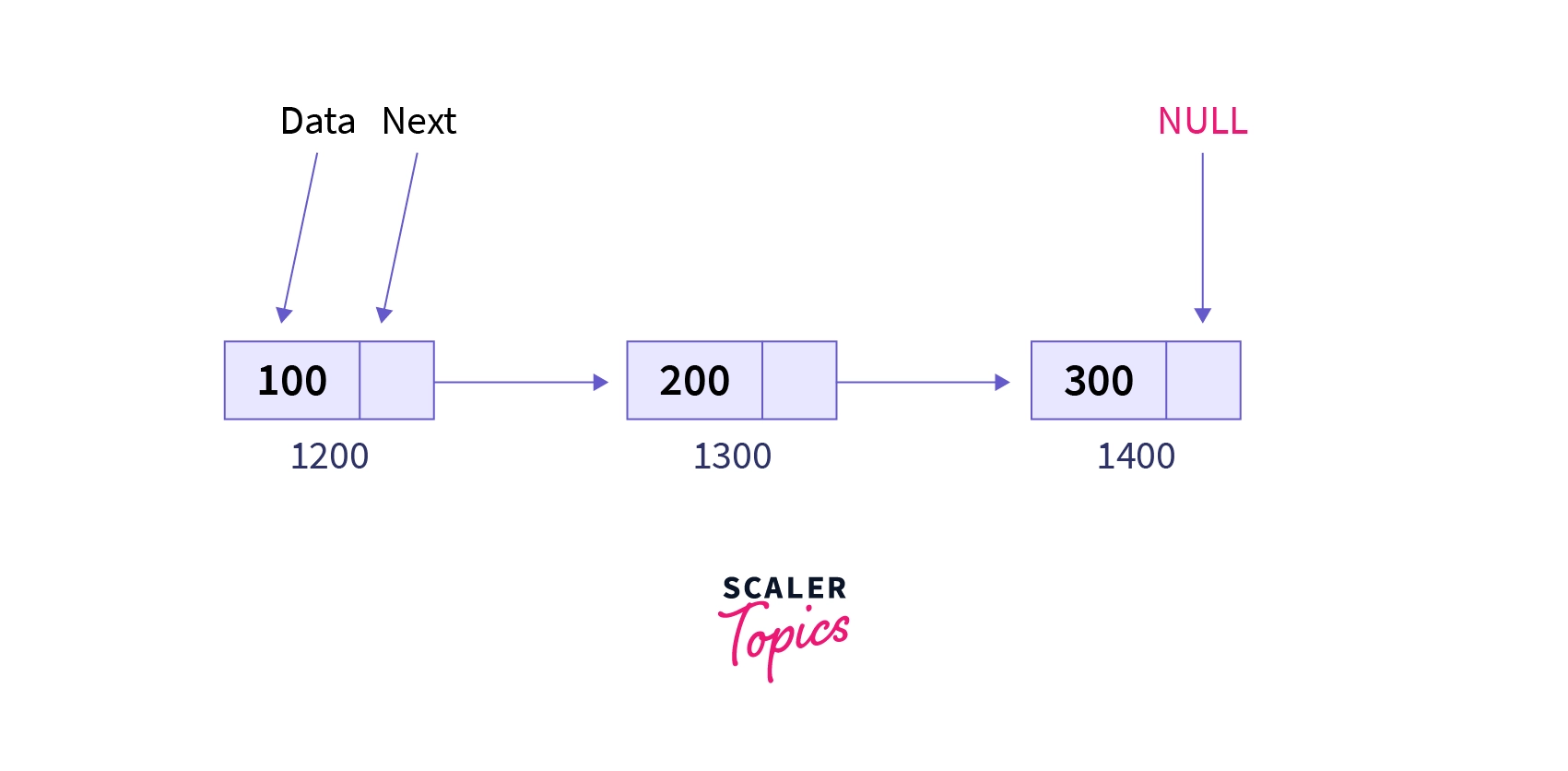
Basic LinkedList Functions & Operations
Many applications use LinkedList in computer science, let’s discuss basic LinkedList functions.
- A node can be represented using structures.
- A node takes the form of a user-defined structure, a node contains two parts,i.e. to store data and to store the reference of the next node
- Basic LinkedList functions are create(), display(), insert_begin(), insert_end(), insert_pos(), delete_begin(), delete_end(), delete_pos()
create()
- This function is a foundation pillar for the entire linked list.
- Here, we create a temp node to scan the value.
- Then we check if LinkedList is empty or not, if LinkedList is empty then the temp node would be the head node.
- If LinkedList is not empty, then by using another node, we traverse till the end of LinkedList and add the temp node at the end of LinkedList.
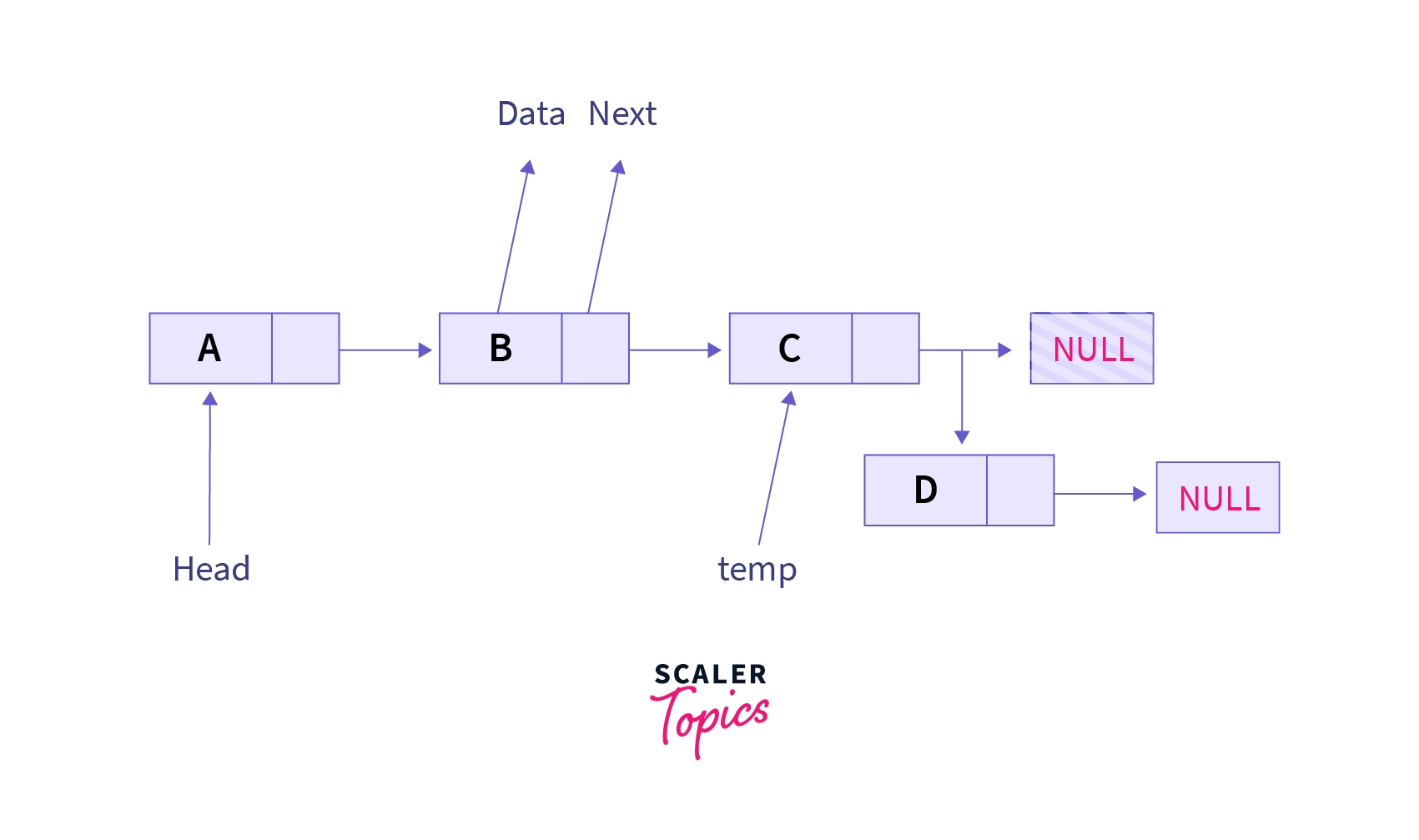
display()
- This function is used to display the entire LinkedList using a while loop
- We first check, if the head node is pointing to NULL or not, if the head node is pointing to NULL, then it indicates that LinkedList is empty, so we return
- If LinkedList is not empty, we assign head node to a temp node and we use this temp node to traverse over the LinkedList using a loop and print them
insert_begin()
- Initially, we create a temp node to scan the value then we check if LinkedList is empty or not
- If LinkedList is empty, then the newly created node would be treated as a head node
- If LinkedList is not empty, then we make the temp node point towards the current head node and the head node to point towards the newly created node
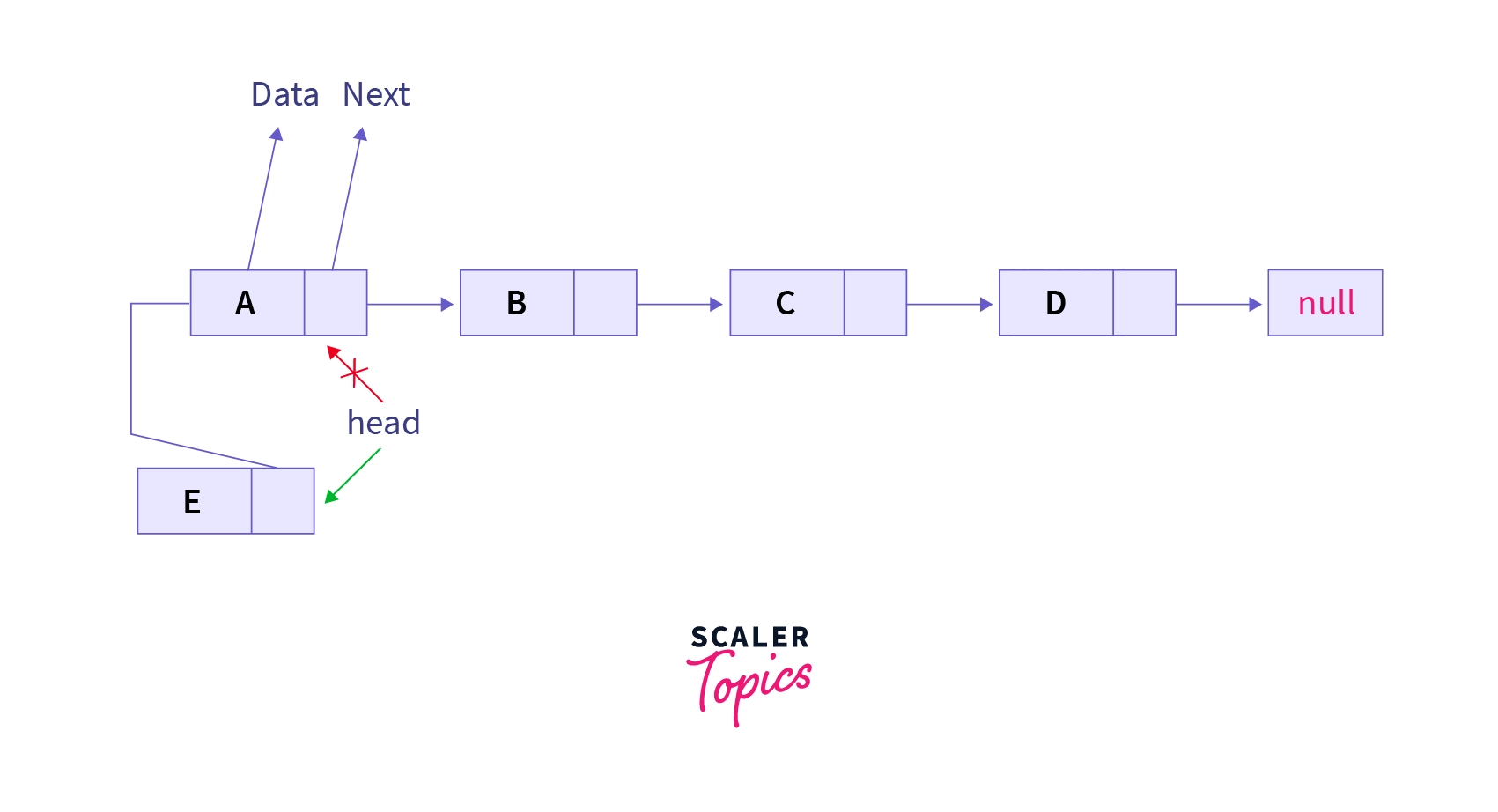
insert_end()
- Firstly, we create a temp node to scan the value then we check if LinkedList is empty or not
- If LinkedList is empty, then the newly created node would be inserted to LinkedList
- If LinkedList is not empty, then we create a new node say ptr, by using ptr we traverse till the end of LinkedList and insert the temp node at the end of LinkedList
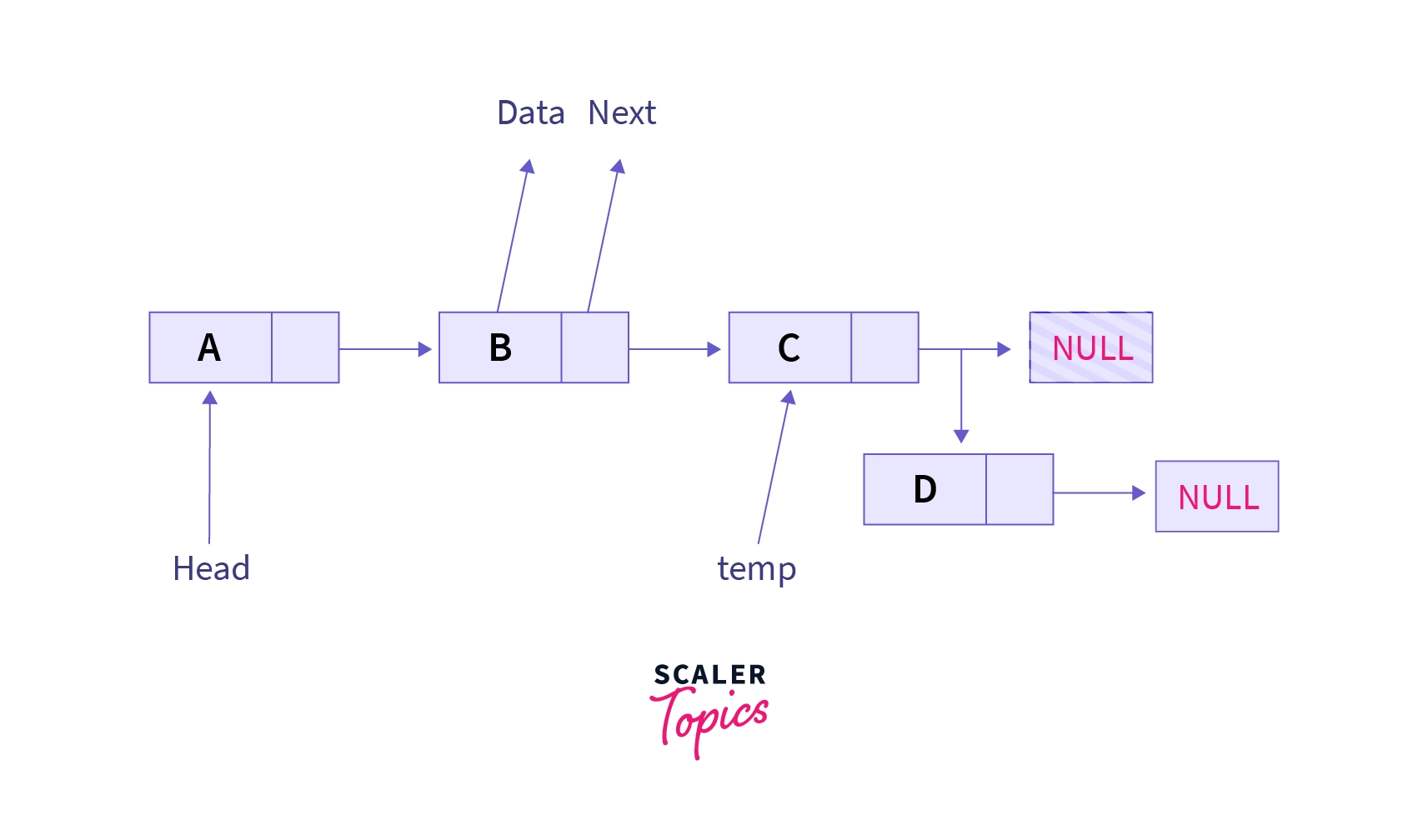
insert_pos()
- Here, we create a temp node to scan the value then we check if LinkedList is empty or not
- If LinkedList empty, then we return
- If LinkedList is not empty, then we take input of node position from the user, if the input is greater than the length of LinkedList, then we return
- If the input is in the range of length of LinkedList then, let's assume we have four nodes A, B, C, D and we need to insert a node next to B, so, we just traverse till node C and make node B point to node E and node E to point to node C.
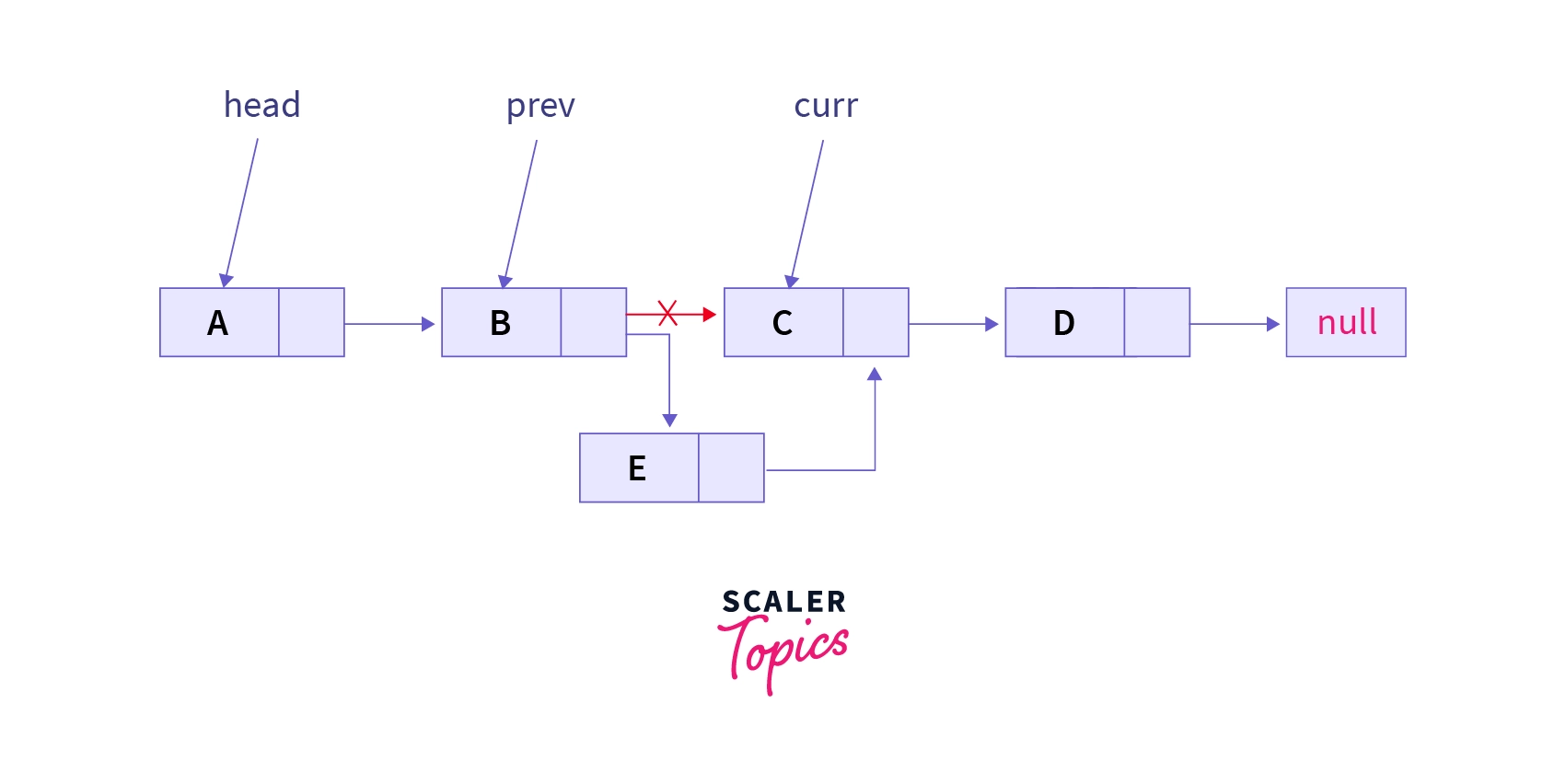
delete_begin()
- This function checks if nodes are present in LinkedList or not, if nodes are not present then we return
- If nodes are present then we make ahead node to point towards the second node and store the address of the first node in a node say, temp
- By using the address stored in temp, we delete the first node from the memory
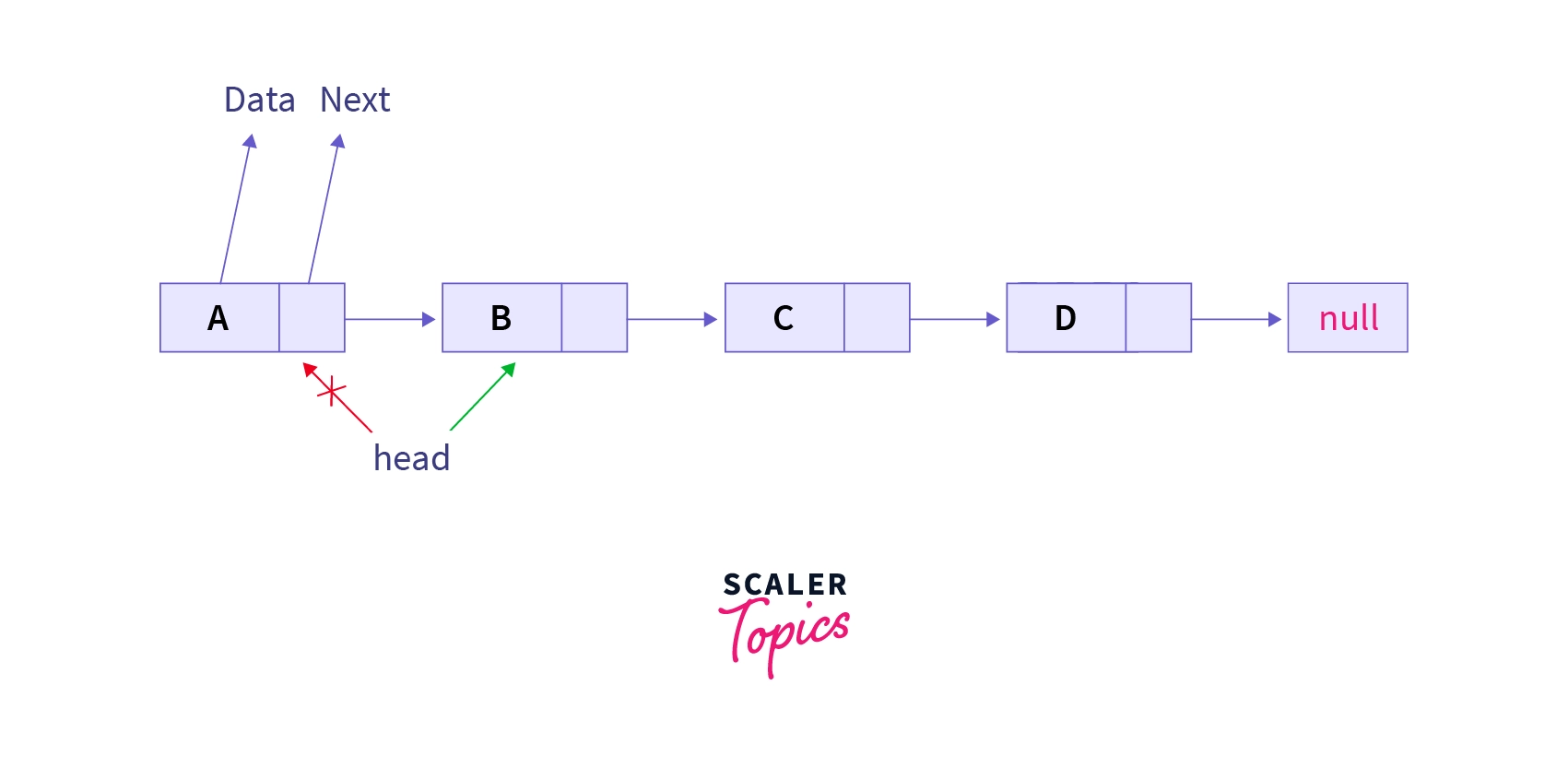
delete_end()
- This function checks if nodes are present in LinkedList or not, if nodes are not present in LinkedList, then we return
- If nodes are present in LinkedList, then we create a temp node and assign a head node value in it.
- By using this temp node, we traverse till last but one node of the LinkedList, and then we store the address present in the next field in a node say ptr.
- Now, we delete the ptr from memory, such that the last node is deleted from LinkedList
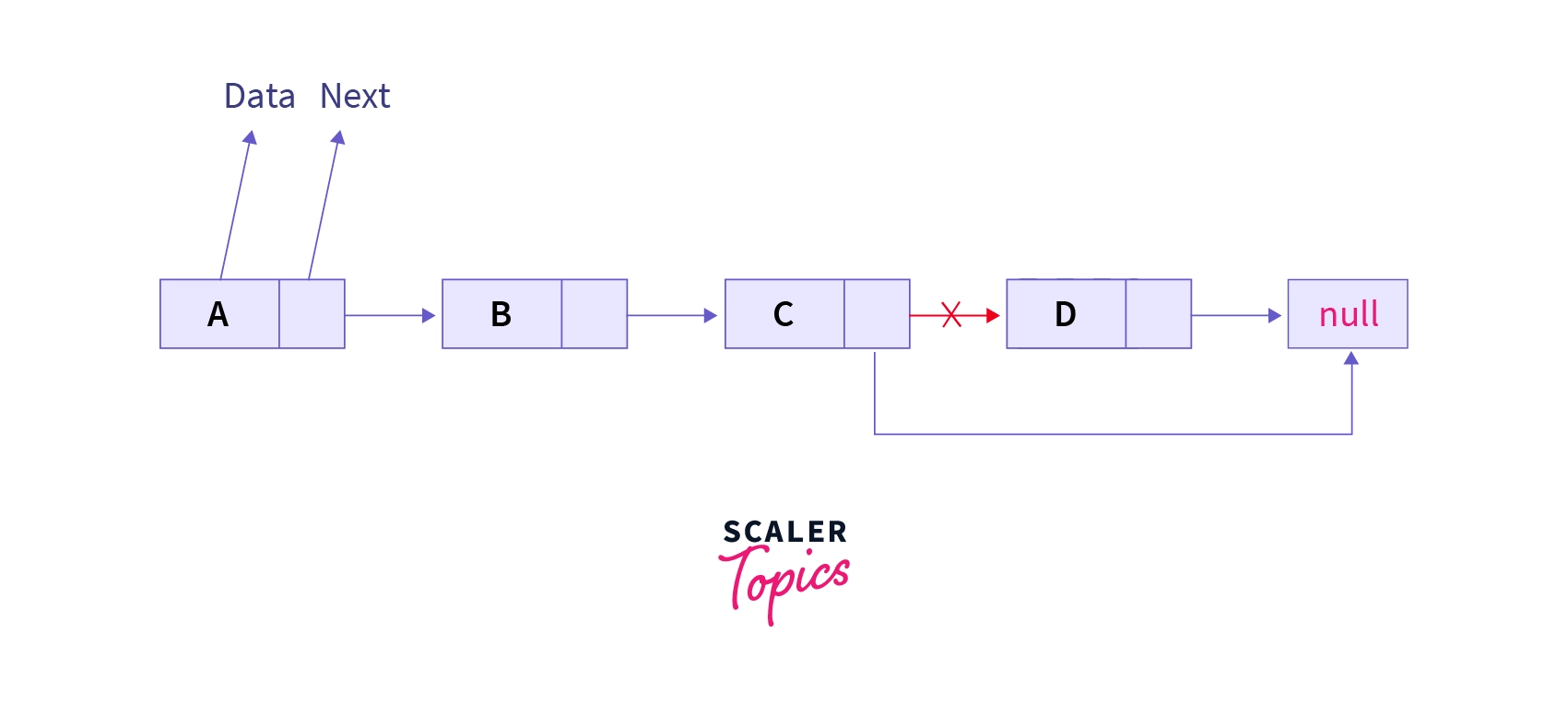
delete_pos()
- On invoking this function, we check if nodes are present in LinkedList or not, if nodes are not present then we return
- If nodes are present in LinkedList, as x,y,z and we need to delete node y
- To delete node y, we traverse till node x and make x to point towards node z, then we delete node y from memory
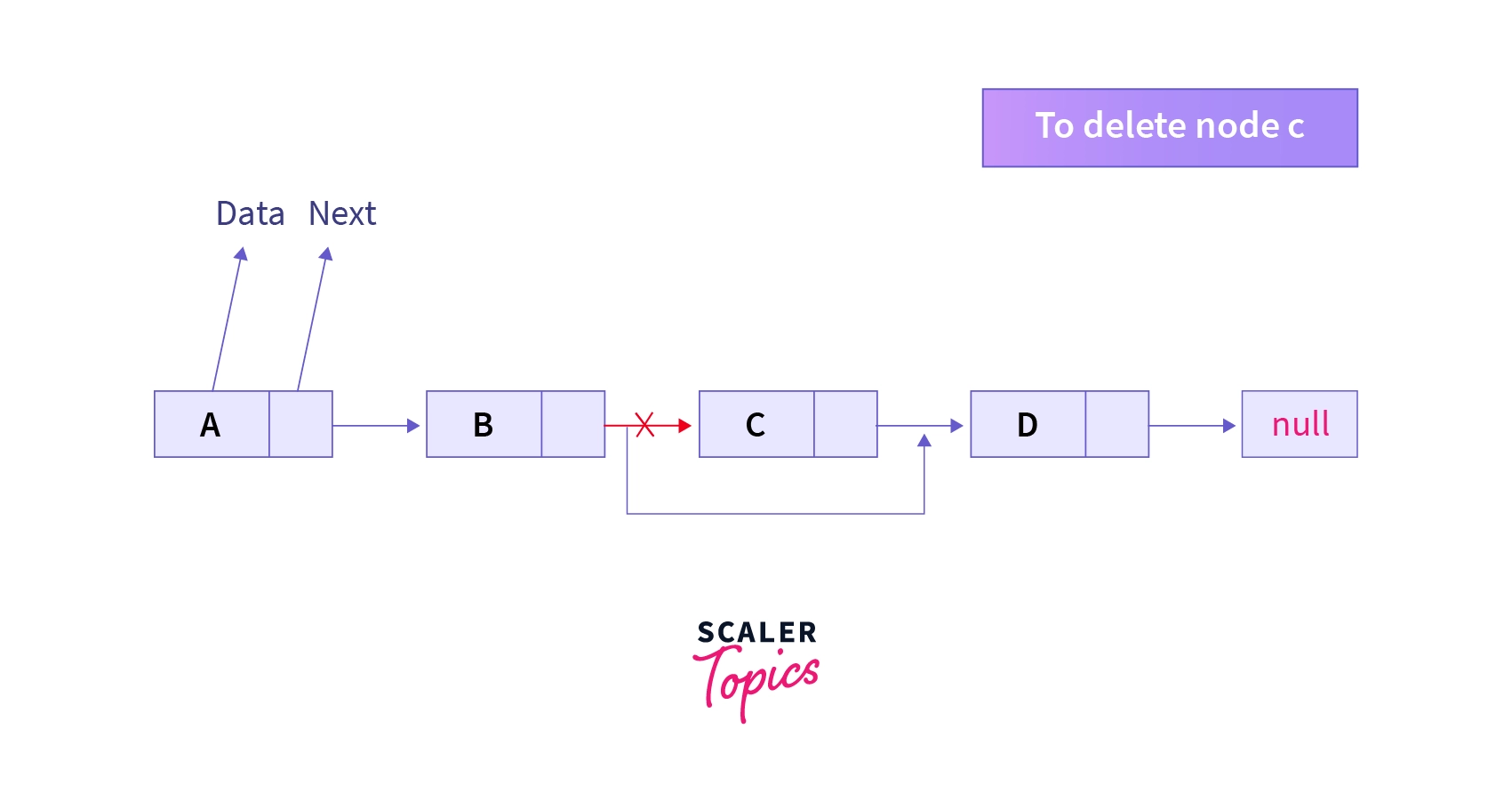
Constructing Linked List
Let’s discuss multiple approaches to building a LinkedList
Naive Method for Creating LinkedList
The naive method for linked list implementation in C is to create individual nodes and link them later using the address of the nodes.
Let’s create five nodes and link them later.
Implementation:
- In the above code, initially we created a structure of type node
- Using this structure, we created five individual nodes and we also initialized data field for every node
- Then, using the address of the node we linked all the five nodes and made them a LinkedList
- This LinkedList is displayed by using a while loop
Single Line Approach for Creating LinkedList
- In the Naive approach, redundant code is present, so, let's discuss how to eliminate redundant code
- Here, nextnode is passed as an argument to the newNode(), this approach helps in eliminating redundant lines of code
Implementation:
- In the above code, initially we created a structure of type node
- We also created newNode function with data, node address as function parameters
- From the main function we are accessing newNode function with its parameters and we are creating a new node for a function call(newNode)
- And, we are returning the newly created address node to the main function, this address is again used to call newNode function
- Finally, by using the address of the head node we are printing the entire LinkedList
Generic Method for Creating LinkedList
- Naive Method and Single Line Method are suitable to understand the implementation of LinkedList
- But, these methods are not suitable to create n number of nodes
- If these methods are used to create n number of nodes, redundant code would be present
- In the below code, the array is traversed from right to left because the head node should be pointing to the first element in the array
Implementation:
- In the above code, initially we created a structure of type node
- We also created newNode function with data, node address as function parameters
- In the main() we have created values array with integer values and stored the size of values array in 'n'
- From the main(), we are using a for loop to traverse over the array, for every element in the array we are calling the newNode function with its parameters
- For every newNode call, it creates a Node and returns the address of the newly created node to main()
- Finally, by using the address of the head node we are printing the entire LinkedList
Standard Solution for Creating LinkedList
- Here, we implement this method same as push() in Stack Data Structure
- We simply add every node to the next field of the head node
Implementation:
- In the above code, initially we created a structure of type node
- We also created newNode function with data, node address as function parameters
- In main() we are calling createList() by passing values array and the size of the array
- In createList() we traverse the array from right to left where every value of the array is passed to push().
- In push(), a node is created for every call, and the address of the node is returned to createList()
- Finally, by using the address of the head node we are printing the entire LinkedList
Making Head Pointer Global
- As we already know that head node points to the first node in the LinkedList, here head nodes are made global
- As, the head node is made global, it can be accessed from any function
Implementation:
- In the above code, initially we created a structure of type node
- In main() we created values array with Integer values, for every value in the array we are calling push function, where we are creating our nodes and linking them together
- As the head pointer is global, we are using it to print the entire LinkedList
Return Head From Push Function
- In this approach, the head node is not made global, the head node is passed as an argument to the push function
- Push function creates nodes and appends nodes to the LinkedList and then returns the head node to the main function
Implementation:
- In the above code, initially we created a structure of type node
- In main() we created values array with Integer values, for every value in the array we are calling push function
- In push() a node is created for every value and the address of this node is returned to the main function
- By using the last address returned by push(), we print the entire LinkedList
Implement LinkedList in C
Implementation of Menu Driven Code
- Here, we are implementing a menu-driven program, so the program asks for user input to proceed further, every input is mapped to its target switch-case statement
- Below is the implementation of the menu-driven program for LinkedList in C
- Using functions we maintain separate modules for every operation in LinkedList
Output:
Conclusion
- LinkedList is a Linear Data Structure that doesn’t store elements at contiguous memory locations
- A node contains two fields data, next field to store the reference of next node
- Node is just a blueprint of the structure
- LinkedList is a preferred Data Structure because of its efficient insertion and deletion
- Doubly LinkedList, Circular LinkedList are variations of Singly linked list implementation in C
- There is no fixed method for linked list implementation in C, we can use any approach as discussed in the article
